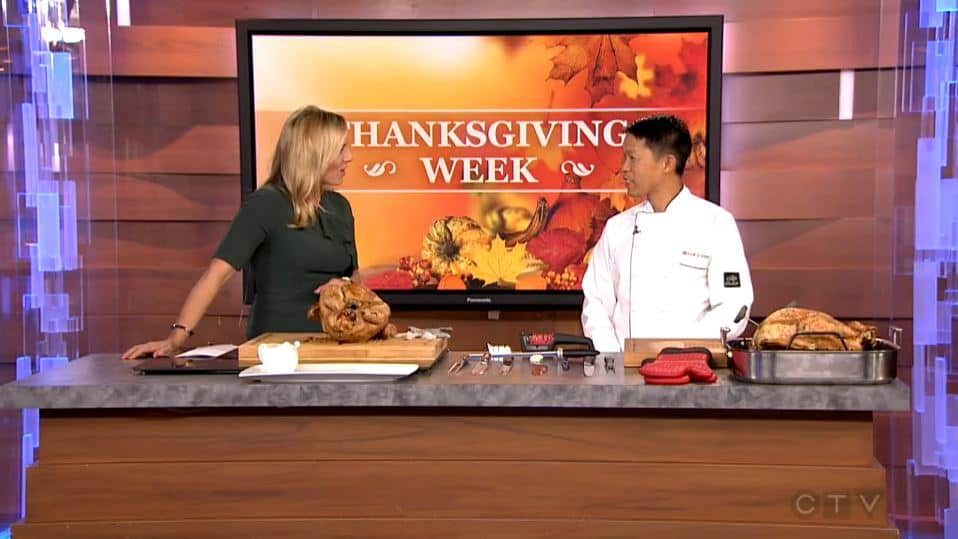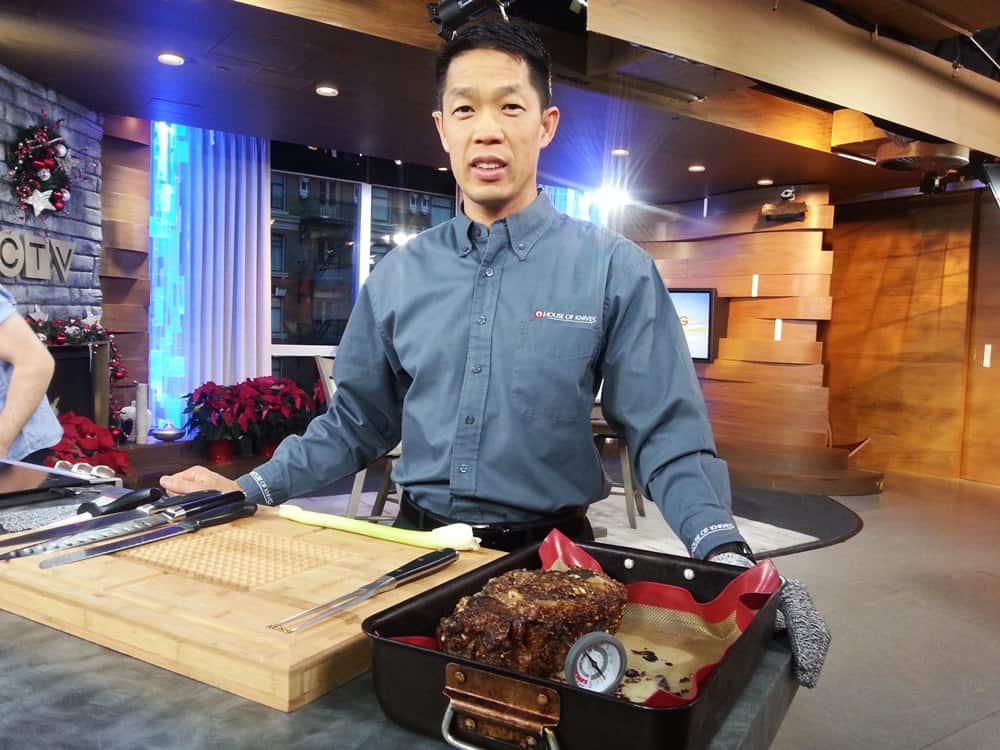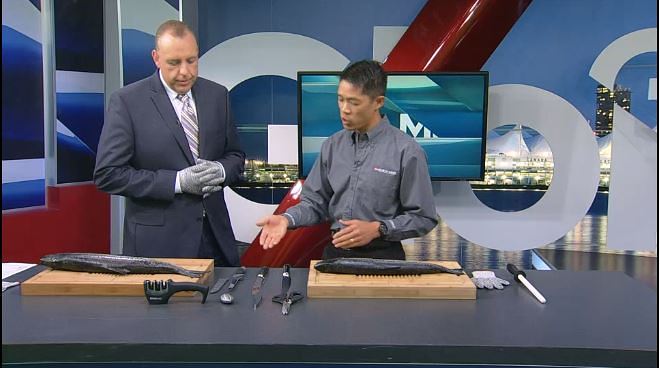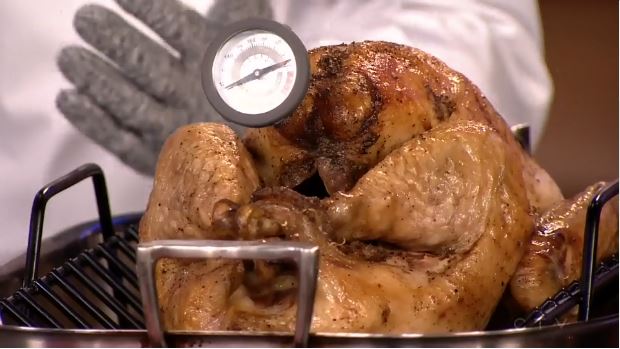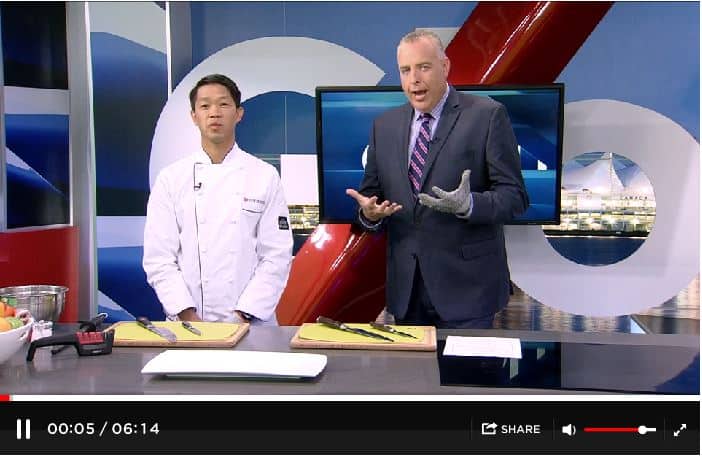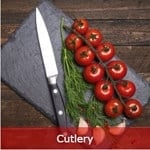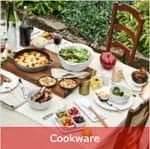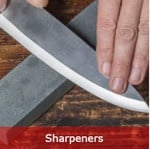How to Carve a Turkey With House of Knives & Global Morning News BC

House of Knives President Andre Eng was up bright and early again to show viewers of Global Morning News BC how to carve a turkey. He was joined by Steve Darling and Sonia Deol from the Global BC News Team, and it seems they definitely had some fun talking turkey.
If you’re having problems viewing the video, you can also catch it right here.
Lay it to Rest

After you take the turkey out of the oven, always give it a chance to rest. The reason you don’t want to start carving it up right away is because you want to let the juices flow back into the meat. This also makes the bird firmer and will make carving your turkey without it falling apart much easier.
Andre recommends pulling the turkey out at about 160°F, so that it has a chance to continue cooking and reach the optimal 165°F without drying out. The best way to keep an eye on the temperature is to put a meat thermometer in and leave it there for the duration of the cooking.
Use a Sharp Knife

While having a high-end carving knife to carve up your bird with is a real treat, it’s more important to have a sharp knife. Andre recommends that you give your chosen knife a few passes over a honing steel before you begin, to ensure each slice is the best it can be.
More importantly is the angle at which you hone. If the knife’s blade is perpendicular to the honing steel, that’s 90 degrees. Half that is 45 degrees, and half that again is 22.5 degrees. Most Japanese knives are honed in the 15 – 16 degree region, while Western or European-style knives have a 20 -22 degree angle. Adjust your angle accordingly depending on the style of knife you have in order to get the best results.
If you find no matter how well you hit those angles while honing that the blade simply won’t respond, it may be time for a sharpening. We sell a range of sharpeners from sharpening stones, to pull-through sharpeners, to electric sharpeners that will get an edge back in no time. But if you’re in a jam during the holidays, or prefer to have a professional do it, House of Knives has sharpening services in all locations.
Two Ways to Slice It
After carefully pulling apart the legs and the wings you’ll want to carve up the turkey breasts. There are two ways to do it.

The first way is to carve right off the bird using a carving fork and a nice, sharp carving knife. While it’s fun to get the slices as thin as possible, Andre recommends slicing them a little thicker to make sure that they don’t dry out before they hit the plate.

The second way to carve up the turkey breast is demonstrated by Steve Darling. After carefully removing the breast meat portions, you can then slice the breasts more easily and give your presentation a more professional, “fanned out” look. While it may look great to get the longest possible slices, Andre recommends cutting across the grain of the meat in addition to having slightly thicker cuts, in order to maximize tenderness. This is very similar to the technique he demonstrated with prime rib.
You’ll notice that both Steve and Andre are using the Cuisipro Cut Resistant Gloves. They not only provide the obvious resistance to accidents, but they also help provide a better grip on the food and protect against some of the turkey’s heat as you carve.
Products Featured in this Segment
- SHUN CLASSIC CARVING 9″ GRANTON EDGE (DM0720)
- SHUN CLASSIC FORK (DM0709)
- WÜSTHOF CLASSIC IKON CARVING 9″ (4506 / 23)
- WÜSTHOF CLASSIC IKON FORK (4414-7/16)
- KUCHEWERKS MEAT THERMOMETER (B4-KS)
- KÜSSI BAMBOO DUAL SIDED (JUICE GROOVE/GRIP) – 55X40CM (59597)
- CUISIPRO CUT RESISTANT GLOVE (74-7329)
Also On Set Today
So that’s how to carve a turkey with all the tips and tools you need to be successful. To find these and other great products to enhance your carving experience, come visit one of our House of Knives Locations in BC or Alberta or shop with us online.



